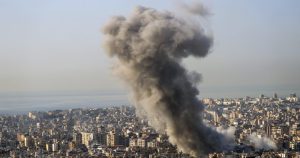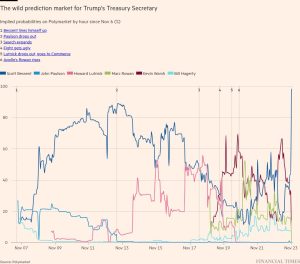Defence companies search for scale in ammunition race for Ukraine
The war in Ukraine has a new frontline: A new munitions factory in Queensland, Australia, jointly owned by Germany’s Rheinmetall and a local contractor NIOA, is churning out tens of thousands of artillery shells for Kyiv.
Work at the Maryborough factory, the first such facility to be built in Australia since the second world war, has barely stopped since it opened two years ago. Although it took time to secure the workforce, “now we are flying,” said Robert Nioa, chief executive of NIOA.
The company, which exports the shells to Germany where they are then filled with explosives by Rheinmetall, plans to increase annual production at the facility by 25 per cent to around 55,000 shells next year. Nioa says it could produce more than 100,000 shells a year with more capital investment.
Like NIOA, other defence companies globally have boosted output of everything from ammunition to rocket motors and missiles to replenish national stockpiles which have been depleted as governments have shipped arms to Ukraine.

Some European arms producers have made progress over the past two and a half years, often investing ahead of securing government contracts. Tom Waldwyn, research associate for defence procurement at the International Institute for Strategic Studies, said in some instances European companies had expanded artillery ammunition production “by as much as 10 times what they were producing before the war”.
Rheinmetall has plans to increase output of Nato-standard 155mm ammunition from around 100,000 rounds before February 2022 to 1.1mn rounds per year from 2027. Sweden’s Saab said the capacity of its ground combat business, which includes ammunition, had doubled to 200,000 units a year in recent years — and it is on course to double that again to 400,000 in the near future.
Thales UK, the British subsidiary of the French defence and technology group, has similarly increased capacity at its facilities in Belfast, Northern Ireland where it builds the Starstreak short-range air defence system and assembles the Saab NLAW anti-tank system. The company plans to double capacity over the next two years and then double again by 2028.
But overall, efforts are still being hampered by supply chain constraints, and industry stakeholders say that much greater investments are needed if Europe is to be able withstand Russia’s aggression while also refilling depleted stockpiles.
Some key bottlenecks remain, notably for raw materials such as cotton linters which are needed to produce nitrocellulose used in artillery shells and other explosives.
There are “significant supply chain issues with munitions supply for Australia and the Allied effort,” said Nioa, including “nitrocellulose . . . which goes into propellant”.
Rheinmetall said it had increased the “safety stock” for certain raw materials such as “cotton linters and armoured steel to around three years of annual production” in order to de-risk its supply chains.
Norway’s government said last week it would invest close to NKr1bn (£70mn) to boost production of critical explosives and rocket motors as part of a plan for its defence industry.
It will co-finance a feasibility study with Chemring Nobel, the Norwegian subsidiary of Britain’s Chemring, to assess the development of an explosives facility. The funding also includes plans for a new rocket motor production line for Nammo, co-owned by the Norwegian and Finnish governments. The company produces rocket motors for air defence missiles among other things.
Rocket motors, said Vegard Sande, director of large calibre systems at Nammo, “are not the only bottleneck for increasing the number of missiles for air defence but it’s one of the critical components where we have to increase capacity”.

Although companies have now secured contracts from governments to boost capacity, ramping up production takes time. “It takes two to three years from an investment decision before you see a production increase,” said Sande.
And as Ukraine confronts its third winter of war, the industry says more needs to be done to make up the gulf between supply and demand.
Jan Pie, secretary-general of ASD, the industry trade body, said that production levels were still short of what was required, especially following decades of under-investment in Europe’s industrial base.
“If the objective is to provide adequate support to Ukraine to withstand Russia’s aggression and to build up sufficient military capacities to deter Russia from further aggression, we have to procure and to produce in Europe much more and much faster,” he said.
Russia, on the other hand, is operating on a war footing. Thanks to support from North Korea, Moscow can currently expend around 10,000 rounds of ammunition per day with no fear of depleting its stockpiles, according to a recent report by the Kiehl Institute for the World Economy. At a similar rate of fire, Germany would use up a year’s worth of its entire ammunition production within 70 days, it said.
The Russians, said Guntram Wolff, senior fellow at Bruegel think-tank and co-author of the study, “have large factory lines . . . massive assembly lines, where the numbers that are churned out are frighteningly high”.
The west needed to step up, he added. “This is about building industrial capacities at scale and being able to produce for years at scale.”
But in order to deliver at scale — and over time — executives said the industry needs much longer contracts to invest.
“If we are going to raise the necessary capital and do heavy investments based on order intake we need a 10-year perspective,” said Nammo’s Sande.
Micael Johansson, chief executive of Saab, echoed the point. Industry, he said, “needs more long-term commitment from nations as it is taking on risk ramping up capacity without guaranteed long-term contracts”.
#Defence #companies #search #scale #ammunition #race #Ukraine





